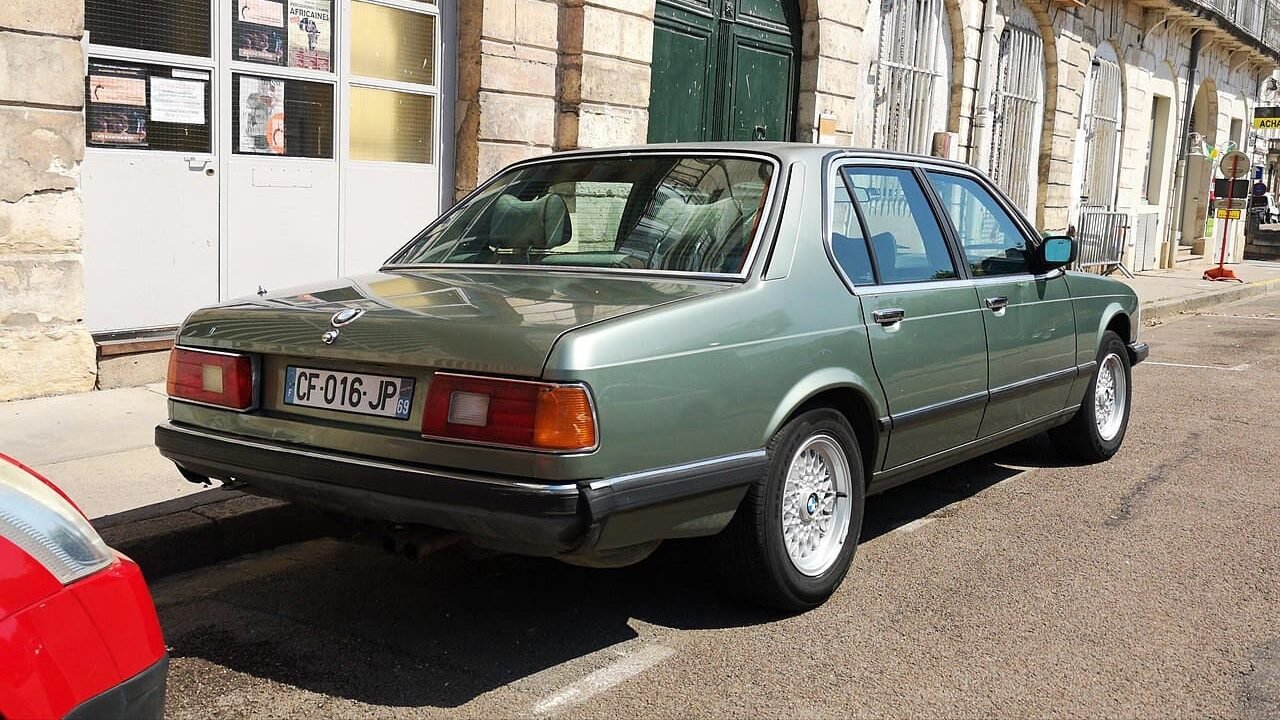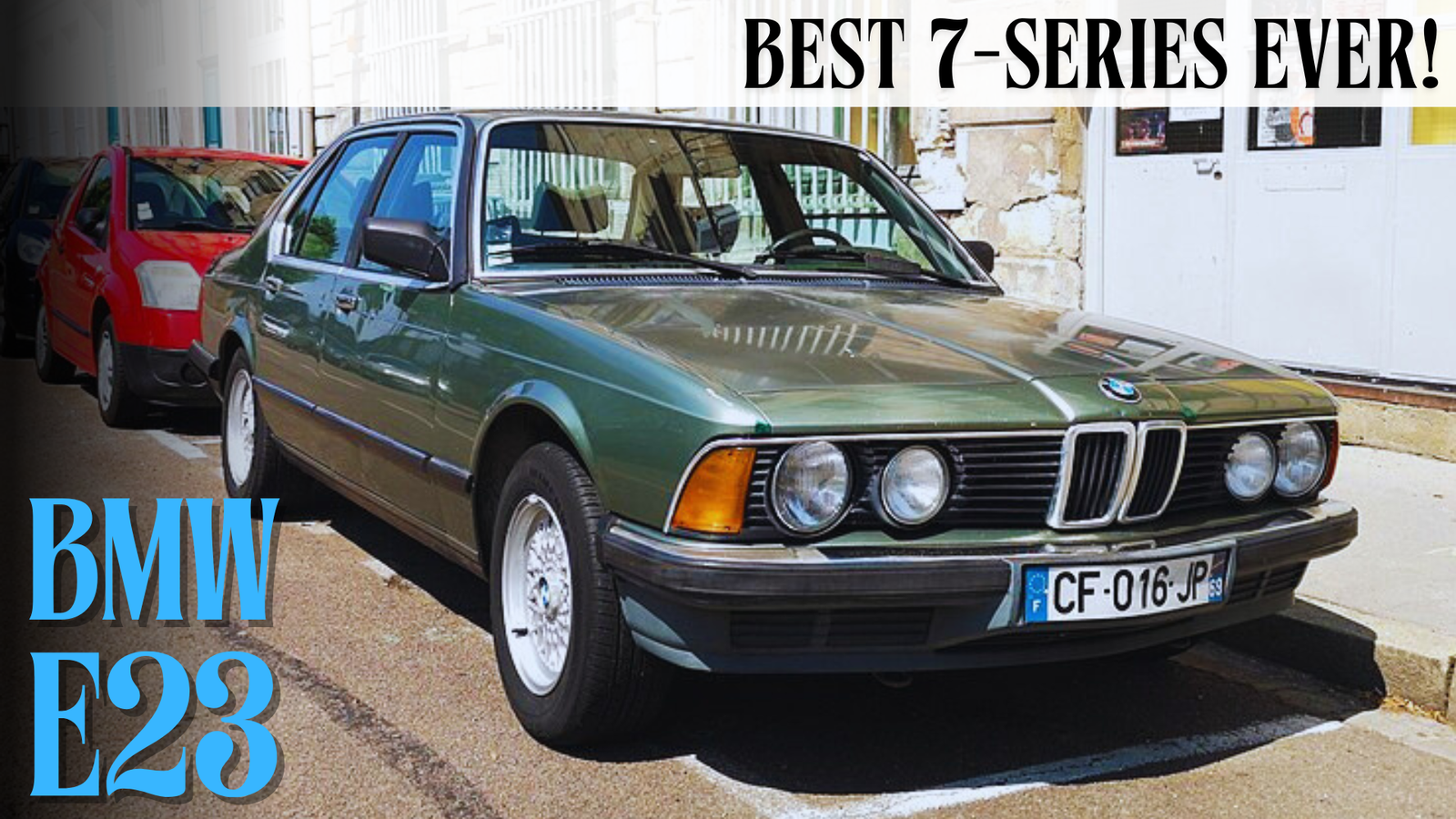Some childhood memories shape the way we see the world, and for me, stepping inside an E23 BMW 730 for the first time was one of those moments. It belonged to our neighbor—an elegant, commanding presence I had only seen in car magazines. Seeing it in person was surreal.
My father’s Land Cruiser was a tough, go-anywhere machine, and my mother’s Volvo 240 was a tank of practicality, but the E23? Even though it was a used BMW 7 series, at least a decade old at the time, it still felt like something entirely different.
I still remember the weight of the doors, how the dashboard wrapped around the driver like a cockpit, and the way it glided down the road with effortless grace. Even as a kid, I could tell this car was engineered to a different standard. That was the day I understood what made a BMW special—and that feeling never left me.

The E23: A Game Changer for BMW
Introduced in 1977 and produced until 1987, the E23 was BMW’s first foray into the luxury sedan segment under the now-iconic 7-Series badge. Replacing the aging E3 “New Six” sedans, the E23 set the foundation for what a BMW flagship sedan should be—luxurious yet driver-focused, technologically advanced yet unmistakably connected to the brand’s sporting DNA.
Production Years & Variants (USA Market)
- 1978-1987 (North America)
- Codenamed: E23
- Available engines in the USA:
- M30B28 – 2.8L I6 (1978-1979)
- M30B32 – 3.2L I6 (1978-1984)
- M30B34 – 3.4L I6 (1983-1987)
- M102/M106 – 3.2L & 3.4L Turbocharged I6 (745i, 1980-1986; Europe only)
The E23 retained BMW’s inline-six heritage, utilizing the venerable M30 engine family, which had already proven its reliability and refinement. Though the North American market never received the turbocharged 745i variant, the naturally aspirated models still delivered smooth and robust performance, especially for their time.
Technology and Innovation
One of the most remarkable aspects of the E23 was its technological advancement. While BMW had always been at the forefront of driver-focused engineering, the E23 took things a step further with features that were ahead of their time, including:
- Onboard diagnostics – One of the first BMWs to feature a primitive check control system.
- ABS (Anti-lock Braking System) – Standard on later models, enhancing safety and control.
- Electronic climate control – A rare feature in the late 1970s, ensuring a comfortable cabin environment.
- Power-adjustable seats & cruise control – Adding to its luxury appeal.
At a time when most luxury sedans were heavy, boat-like machines prioritizing comfort over precision, the E23 stood apart by offering both—something BMW has since made a hallmark of its 7-Series lineage.
Driving Experience: How It Stacks Up Today
By modern standards, the E23 is not a fast car, but what it lacks in outright performance, it makes up for in driving feel. The steering is communicative, the suspension is firm but compliant, and the inline-six engines, though not particularly powerful by today’s standards, deliver a smooth and predictable surge of power. Compared to its contemporaries—such as the Mercedes-Benz W126 S-Class—it feels much more engaging, staying true to BMW’s driver-centric philosophy.
However, it is not without flaws. The E23 was notorious for electrical gremlins, and as with most classic BMWs, rust is a constant concern. Parts availability can be challenging for certain trim-specific components, though the M30 engine itself is well-supported within the BMW community.

Why the E23 Still Matters Today
For enthusiasts, the E23 represents the genesis of the 7-Series—a lineage that has gone on to define BMW’s flagship luxury segment. Unlike later 7-Series models that became increasingly complex and burdened with technology, the E23 remains relatively simple, retaining the mechanical purity that made classic BMWs so special.
If you’re considering an E23 today, it’s essential to seek one with a well-documented history, preferably from a dry climate. Avoid neglected examples, as restoration costs can quickly spiral out of control. But for those who appreciate classic BMW engineering, the E23 remains one of the most rewarding vintage luxury sedans to own.
BMW’s first 7-Series was a statement of intent—a declaration that luxury and driving pleasure were not mutually exclusive. It may not have the digital wizardry of modern 7-Series models, but the E23 remains a masterpiece of old-school BMW craftsmanship.
If you’re a fan of classic BMWs, you might also be interested in Top BMW X Models: The Most Dependable Choices—a must-read before diving into the world of vintage executive sedans.
Also, don’t forget to bookmark our homepage and explore more in-depth car reviews and buying guides.
*Disclaimer: This website provides automotive content for informational purposes only and should not be considered professional advice. While we strive for accuracy, we do not guarantee the reliability or suitability of any vehicle or product mentioned—always conduct your own research before making purchasing decisions. Additionally, some links on this site are affiliate links, meaning we may earn a commission if you make a purchase, at no extra cost to you.

